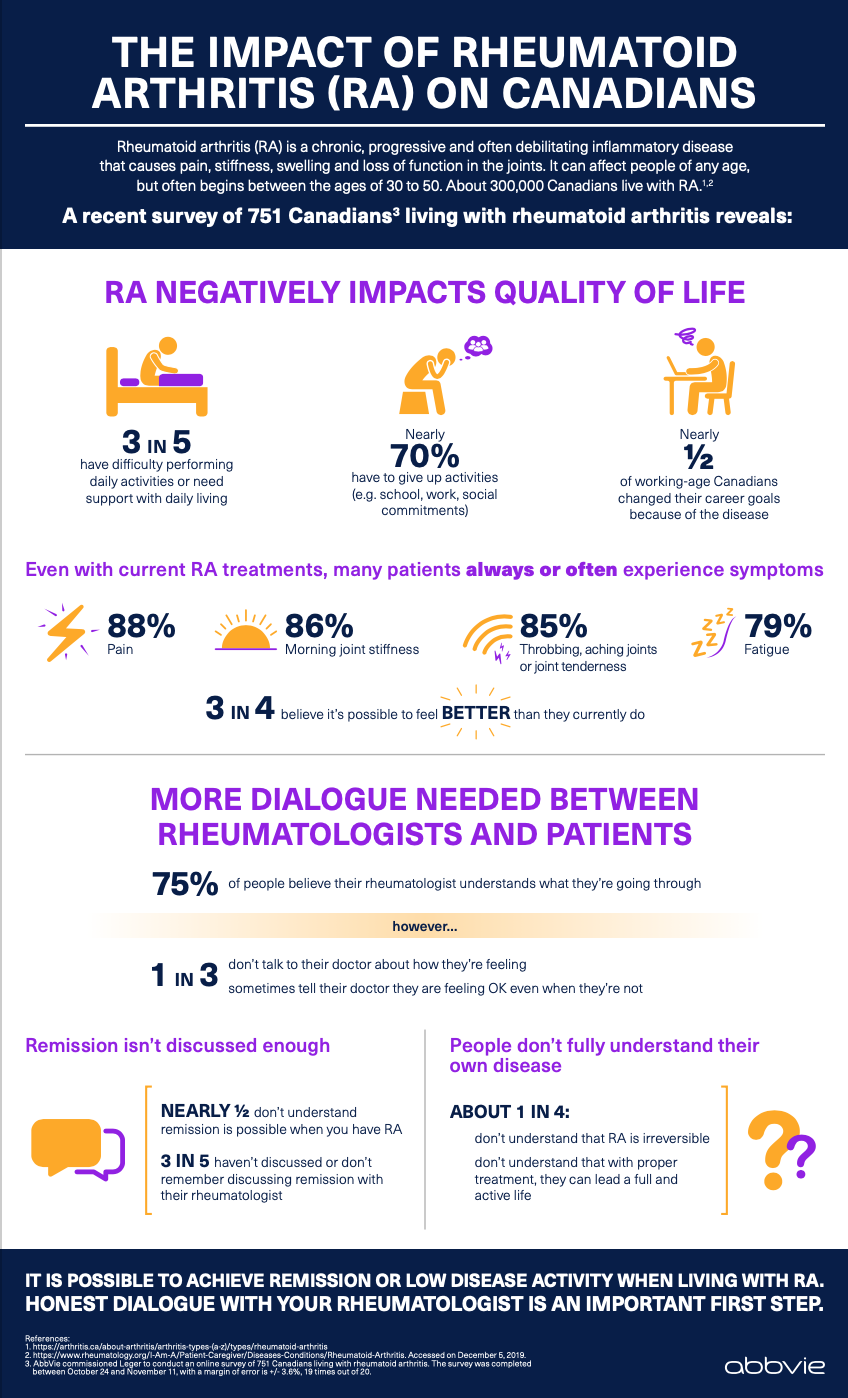
Dr. Philip Baer
Vice President, Ontario Rheumatology Association
Rheumatoid arthritis (RA) affects about 1 in 100 Canadians, both old and young. This progressive and incurable autoimmune disease can have substantial negative impacts on quality of life. But, where once there was little to be done, many of those diagnosed today can realistically hope to live a life largely free of arthritis-related pain and disability.
When RA is left untreated, the disease wreaks severe and wide-ranging damage. “RA is a systemic disease that affects the whole body,” explains Dr. Philip Baer, Vice President of the Ontario Rheumatology Association. “It’s a quite serious condition for which we don’t have a cure, but we do have much better treatments than we used to. Just because there’s no cure for RA doesn’t mean it can’t be effectively managed.”
RA is a chronic disease, so most patients will require ongoing treatment throughout their lives. At the same time, once a patient finds the right treatment plan, they can potentially live a life effectively free of the disease’s burden. “In rheumatology we’ve learned some valuable lessons from cancer treatment,” says Dr. Baer. “As with some cancers, if we’re very aggressive with RA therapy at the very beginning, there’s a window of opportunity where we can treat toward a target of remission. Remission doesn’t mean you’re cured, but it means that you’re in a state where you don’t feel like the disease is affecting your daily life.”
Disability from inflammation is reversible. Disability from damage is not.
When an RA patient is in remission, not only do they feel better, but their disease is no longer progressing. Preventing the permanent damage caused by RA has rheumatologists heavily focused on getting patients in the door as early as possible for diagnosis and treatment.
“What first drives people to a doctor is usually joint pain, stiffness, and swelling,” says Dr. Baer. “The pain can be quite severe. People often have trouble sleeping, as well as difficulty at work, at home, and in their leisure activities. Fortunately, most of this early disability is due to inflammation, not to permanent damage, and disability from inflammation is reversible with treatment. With aggressive early treatment, we can often get people back to where they were before their symptoms started.”
Anyone with arthritis-like symptoms should talk to their health care provider about seeing a rheumatologist as soon as possible.
Novel treatments aiming for more ubiquitous remission.
People with newly-diagnosed RA today can have realistic hope of achieving remission. Still, we must not forget the work yet to be done. We must ensure that all Canadians have equal access to the best treatments, and that treatment options continue to improve. As it stands, roughly 70 percent of patients receiving treatment for RA are not yet achieving remission.
“In the last 20 years, rheumatology has been revolutionized,” says Dr. Baer. “We have so many patients who are doing so much better than they were before. At the same time, we still have many patients who would benefit from current novel therapies and novel therapies yet to come, and I’m confident that we’ll see ongoing innovation.”
Ask your rheumatologist about your treatment options.
This page was made possible with support from AbbVie.



